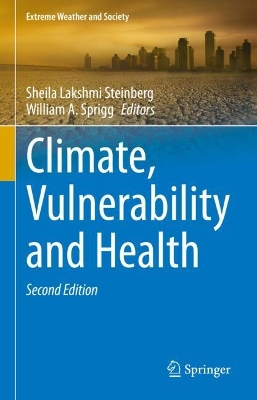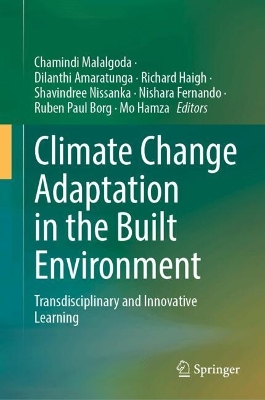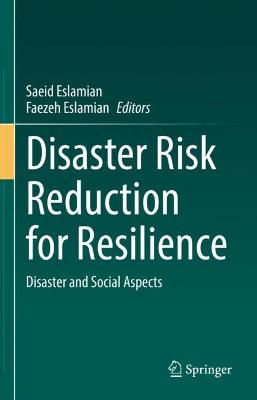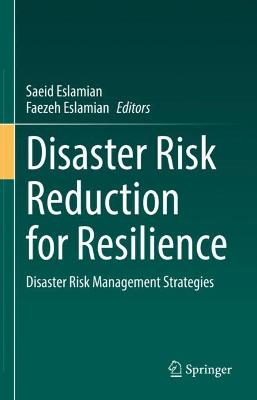Disaster Risk Reduction for Resilience
 portes grátis
portes grátis
Disaster Risk Reduction for Resilience
Disaster Economic Vulnerability and Recovery Programs
Eslamian, Saeid; Eslamian, Faezeh
Springer International Publishing AG
10/2022
339
Dura
Inglês
9783031083242
15 a 20 dias
Descrição não disponível.
Chapter 1. Systemic Risk and Mitigating Economic Disasters In the Arctic: Cases of Oil Spills, Cruise Ships and Pandemics.- Chapter 2. Assessing Loss and Damage of Low Exposed Sudden Onset Disasters: Evidence from the Marginal Salt Cultivators of Kutubdia Island, Bangladesh.- Chapter 3. Disaster Economic Vulnerability and Recovery Programs Experience from Tanzania.- Chapter 4. Gendered Economic Vulnerabilities in Disaster Environments the case of the COVID-19 Pandemic.- Chapter 5. Economic Growth and Hazard Risk Reduction.- Chapter 6. Resilience in Disaster Relief and Recovery Programs at the Person-Environment Nexus.- Chapter 7. Improving Resilience Capacity of the Policies and Planning for Temporary Shelters in Crises and Disasters.- Chapter 8. Evaluating risk from disasters to improve resilience Lessons from Nigeria and South Africa.- Chapter 9. Perspectives for collaborative disaster risk reduction experience report from the Brazilian Disaster Knowledge Platform.- Chapter 10.Development of an Earthquake-Induced Landslide Hazard Assessment.- Chapter 11. Use of Typha Latifolia as a Tool for Biomonitoring of Hazardous Domestic Effluents.- Chapter 12. Arsenic Control for Hazard Risk Reduction.- Chapter 13. A Climate Adaptation Monitoring Tool for Sustainable Marine Planning.- Chapter 14. Urban Rivers Resilience.- Chapter 15. A Risk-Based Approach to Development Planning.- Chapter 16. Unveiling the Latent Disasters from a Holistic and Probabilistic View Development of a National Risk Atlas.
Este título pertence ao(s) assunto(s) indicados(s). Para ver outros títulos clique no assunto desejado.
Disaster vulnerability;Economic resilience;Early warning systems;Community resilience;Seismic hazard assessment;Climate change vulnerability;Sustainable disaster relief;Threat level evaluation
Chapter 1. Systemic Risk and Mitigating Economic Disasters In the Arctic: Cases of Oil Spills, Cruise Ships and Pandemics.- Chapter 2. Assessing Loss and Damage of Low Exposed Sudden Onset Disasters: Evidence from the Marginal Salt Cultivators of Kutubdia Island, Bangladesh.- Chapter 3. Disaster Economic Vulnerability and Recovery Programs Experience from Tanzania.- Chapter 4. Gendered Economic Vulnerabilities in Disaster Environments the case of the COVID-19 Pandemic.- Chapter 5. Economic Growth and Hazard Risk Reduction.- Chapter 6. Resilience in Disaster Relief and Recovery Programs at the Person-Environment Nexus.- Chapter 7. Improving Resilience Capacity of the Policies and Planning for Temporary Shelters in Crises and Disasters.- Chapter 8. Evaluating risk from disasters to improve resilience Lessons from Nigeria and South Africa.- Chapter 9. Perspectives for collaborative disaster risk reduction experience report from the Brazilian Disaster Knowledge Platform.- Chapter 10.Development of an Earthquake-Induced Landslide Hazard Assessment.- Chapter 11. Use of Typha Latifolia as a Tool for Biomonitoring of Hazardous Domestic Effluents.- Chapter 12. Arsenic Control for Hazard Risk Reduction.- Chapter 13. A Climate Adaptation Monitoring Tool for Sustainable Marine Planning.- Chapter 14. Urban Rivers Resilience.- Chapter 15. A Risk-Based Approach to Development Planning.- Chapter 16. Unveiling the Latent Disasters from a Holistic and Probabilistic View Development of a National Risk Atlas.
Este título pertence ao(s) assunto(s) indicados(s). Para ver outros títulos clique no assunto desejado.







